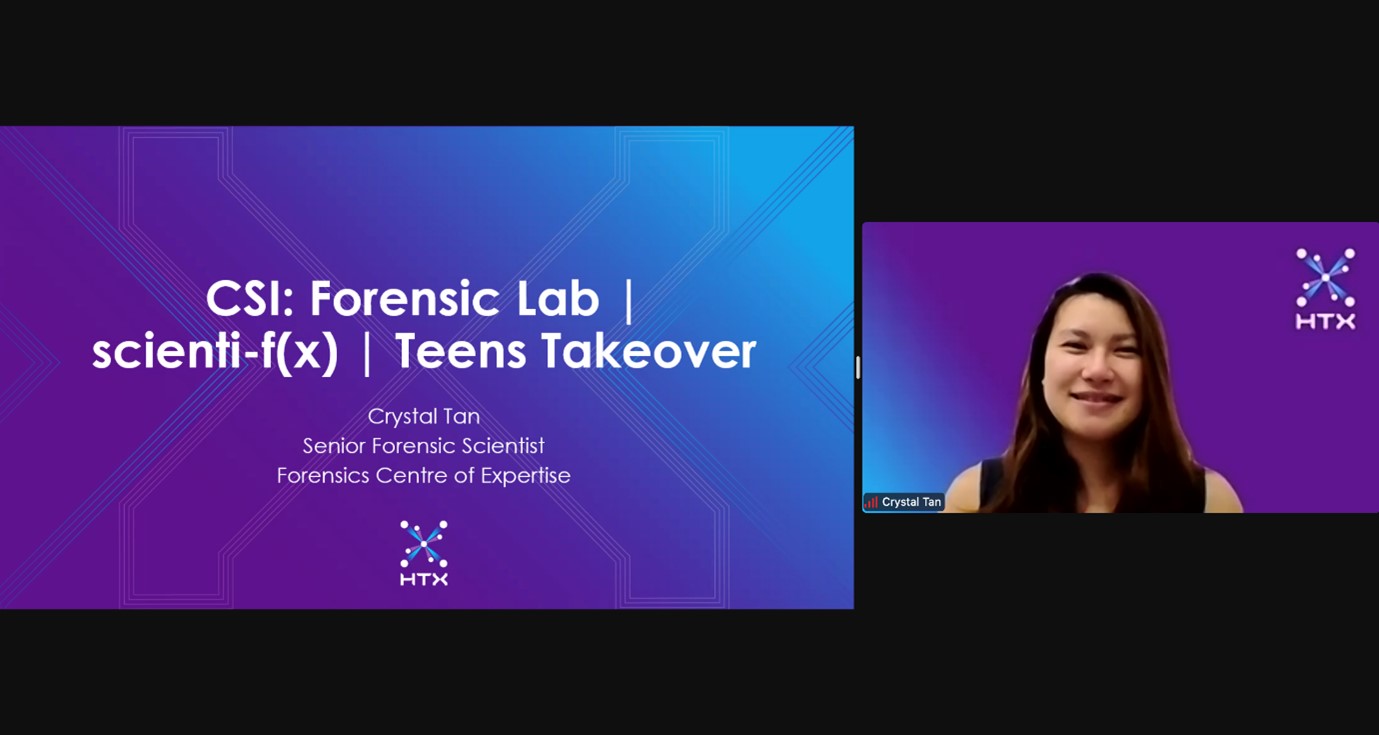 (Image: HTX)
(Image: HTX)
It was early in the day and Crystal was at a construction work site with her colleagues. The high-pitched sounds of an electric hand-held rotary cutter filled the air as its abrasive wheel made a deep cut in the concrete floor, moving menacingly towards an unprotected gloved hand amidst a cloud of dust.
No one was hurt that morning. In fact, Crystal and her colleagues were conducting simulation experiments on a workplace incident case where a worker using the power tool was suspected to have intentionally hurt his thumb to seek compensation from the company.
Scene documentation, reconstruction and simulation are some of the many areas of forensic science that Crystal, a Senior Forensic Scientist at HTX’s Forensics Centre of Expertise (CoE), has worked on in her career spanning more than 10 years. Prior to joining HTX in July 2021, she was a forensic scientist with The Forensic Experts Group and the Health Sciences Authority.
Her areas of expertise include patterns, prints and marks (e.g. fingerprints, toolmarks and firearms), questioned documents (e.g. tampered or fraudulent documents, handwriting and signatures), chemical analysis of unknown substances and materials, and traffic accident reconstruction.
In an online workshop on June 15 entitled, “CSI: Forensic Lab | scienti-f(x) | Teens Takeover”, organised by the National Library Board for secondary school students, Crystal shared her experiences in the forensics field, both in carrying out forensic analyses and conducting research. She also highlighted the techniques used in the examination of various types of physical evidence such as DNA, questioned documents, trace evidence, as well as in scene analysis and reconstruction.
A science degree – not necessarily a forensic science one – is needed if you are keen to join the world of forensics and a myriad of exciting opportunities can be matched to one’s strengths and interests, she said. Crystal has a Chemistry and Biological Chemistry degree from the Nanyang Technological University.
For Crystal, pursuing a degree in Chemistry and a career in forensics was a natural choice. Chemistry was her best subject in school, and she had always been fascinated by ancient civilizations and the human anatomy as a child.
Always a new challenge and something new to learn
Every case is memorable as there’s always a new challenge and something new to learn, Crystal said. It is important to keep an open mind and look at things in totality so that we don’t miss out on important details. It is also critical to be curious and seek out new ideas, especially when it comes to research.
At HTX, you get the chance to work on pressing forensic problems, create something new, and take things to the next level.
What she enjoys most about her job is working together with her colleagues to generate ideas and practical solutions, and learning from her boss, Lim Chin Chin, Director of the Forensics CoE.
“Sometimes you don’t find the answers immediately, but it is the whole process of troubleshooting and putting our heads together that makes it fun to work together as a team,” she said. “It’s important to have a strong leader and mentor, who is also inspiring.”
She added: “Teamwork is also essential and more can be achieved when people with different strengths complement and support one another. It is definitely way more interesting than a desk-bound job.”
Taking forensics to the next level
The Forensics CoE at HTX conducts research and development (R&D) for capability development, surveillance, and intel purposes.
“Here you get the chance to work on pressing forensic problems, create something new, and take things to the next level,” Crystal said.
The team is exploring among others, new technologies, techniques that use AI and machine learning, as well as collaborating with other CoEs such as Data Science & AI (DSAI) and Q Team to develop innovations that force-multiply the Home Team Departments.
“We are working on ways to improve our forensic capabilities by leveraging technologies and tapping on the expertise of others to jointly create solutions that no single party is able to develop on its own,” she said.
Read related article: Transforming CSI with technology
We are always seeking inquisitive and innovative individuals to co-create extraordinary solutions with us.
Join us to be at the forefront of the finest tech capabilities in the field! Join Us

